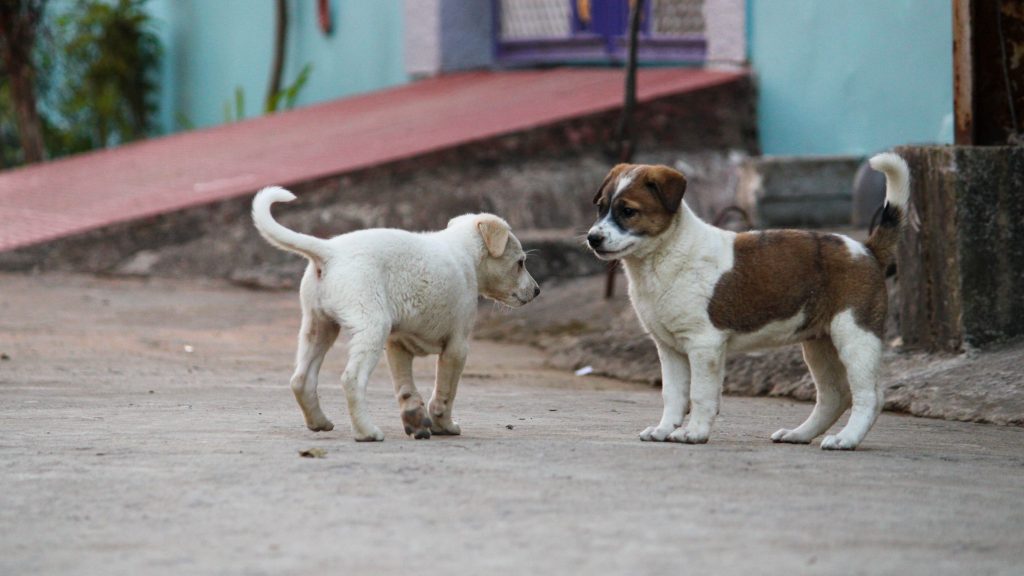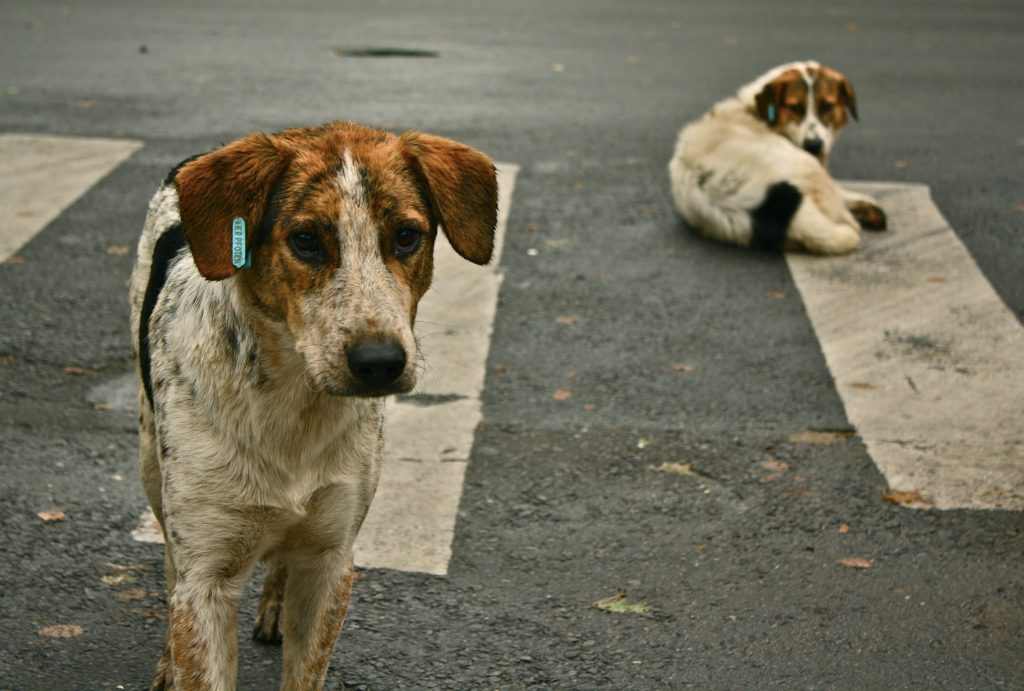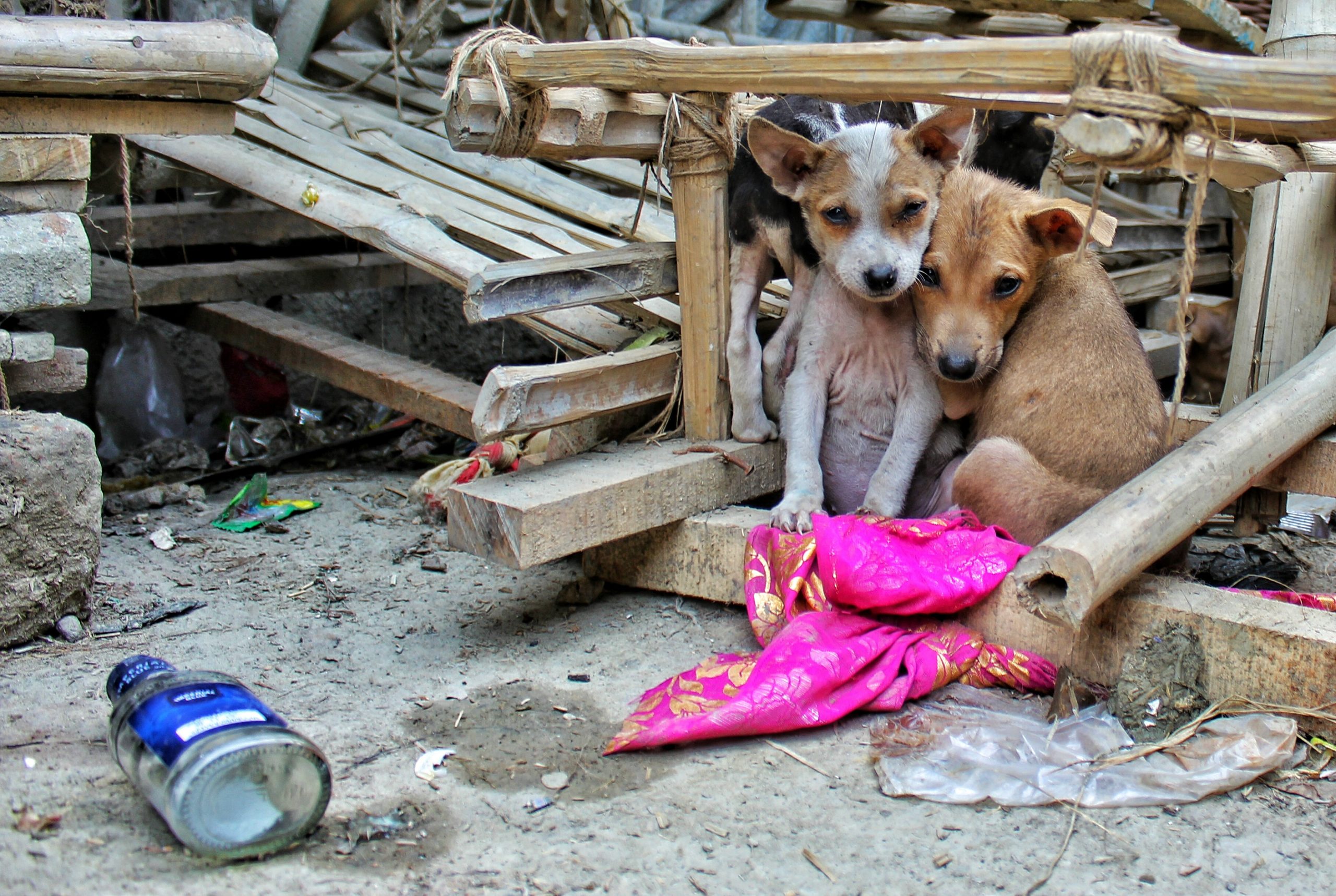One day out of curiosity, I opened up some websites on my phone to see what practical approaches were out there to help the street dogs.
I was curious about things like the possibilities of helping these street dogs to live in peace within our society and more. With some questions in mind, I became ready to dive deep into the internet for information.
Street dogs in Nepal
I found that Nepal has thousands of abandoned dogs, with an estimated 10,000-30,000 in Kathmandu alone. The Indian pariah dog (most common), the mountain dog, Tibetan mastiffs, Himalayan mastiff (bhote kukur) and other mixed breeds are the breeds of street dogs found in our country.
These ownerless, homeless dogs spend most of their lives on the streets and receive little to no medical attention. Yet, Nepal’s street dogs are found to be intelligent, clever, resilient, and street-savvy, and given a chance, they can become loving and loyal companions.
However, I also figured out that this ungoverned, displaced, and disregarded animal thriving their life on the streets are exposed to several human-induced threats reflecting the substandard attitude and behaviour of this 21st-century society towards these vulnerable beings.
Nevertheless, humanity is still alive and in many cases, the majority of the food for these homeless dogs comes from human donations. The prevalence of disease and injury among these street dogs is significant, and their lives are much shorter than those of pet dogs, also because of the food they have from garbage laying around in the streets of Kathmandu.
The problem with people more than dogs

These street dogs face problems such as malnutrition, being hit and run by vehicles, not getting medical attention, cruelty, physical abuse etc. There are many cases where the negligence of humans in regard to this animal has led their lives to the death.
Some of them are beaten badly for them trying to get closer to humans or visiting their houses in search of affection whereas some are harmed just for the peace of some evil human minds for no reason. Then, hundreds of street dogs are left to be killed on roads every year, hit by a vehicle by jagged riders; some of them are racked with the pain of wounds given by humans; some are brutally murdered as well; some die just because of deprivation of food; some become prey to humans having fun with a catapult and stone.
Governing bodies show no empathy as well because many of them are poisoned by municipalities, local bodies or community people in the name of reducing the dog population in their locality.
Every year, almost 200 people suffer rabies as a result of dog bites and this becomes a big enough reason for people to believe that street dogs are a problem, and some to the extent of believing that these misplaced canines should be killed to reduce the street dog population, while still others admit to hurling stones at dogs. While risks of rabies from street dogs are a factor to be considered, there must be more humane ways to deal with them.
Organisations working for the welfare of street dogs
I looked up to see organisations that are working in the sector and the kind of work being done. I found very few organisations speaking up for stray dogs even though there are hundreds of donors and organisations fighting for other causes.
A non-profit organisation Kathmandu Animal Treatment (KAT) Centre was established to help and protect Nepal’s street animals, particularly dogs. Its main purpose is to reduce the number of street dogs while also ensuring that those that remain are safe and healthy.
One of the members of the organisation was found saying that there are over 20,000 dogs that live in the streets of Kathmandu. They say many suffer from malnutrition, infected skin patches, parasites and other illness and injuries.
This organisation and others similar to them have aided these canines by providing rabies vaccinations, animal birth control, public education, and rescuing and treating sick hounds. Also, there are organisations working for animal welfare that have rescued thousands of street animals. To name some, there are Animal Nepal, Sneha’s Care, HART, Paaila, Aatmoutsarga Nepal, and more.
Optimistic scenario and challenges

Some also believe that because these street dogs rely on scavenging waste to live, more waste means healthier dogs and puppies. In an ironic twist, this makes their presence in society helpful for public health. They eliminate perishable waste that could otherwise be a cause of contamination for people by scavenging rubbish.
I do not know the extent to which they contribute to the waste management problem, but I do believe that we must conserve these breeds to ensure that their kind does not become extinct from our ecosystem. But, how do we do it?
Initial conservation steps towards their survival in a community would be establishing an animal management welfare community in the municipalities. This committee would work to link community members with their respective wards and make proper plans to feed and vaccinate the street dogs. This committee then should also provide awareness to the people in the communities while also identifying rogue dogs and transferring them to animal shelters.
The government should encourage people to pet the local breeds of dogs and discourage foreign breeds. A good animal shelter with proper facilities like veterinary care should be put in place. Population control of street dogs should be prioritised through vaccinations. These approaches can be specifically laid out in the points below:
- Capture, neutering, vaccination, and release: Vaccinating stray dogs against diseases like rabies, etc
- In several countries, sheltering free-roaming dogs is the most experimental and theoretical approach to dog population control.
- Imposing taxes on foreign breeds: This was first done in the Netherlands and was hugely successful in encouraging people to adopt local dog breeds. Dogs in homes mean no dogs on the streets.
While street dogs do not have the luxury of a comfortable life that house pets enjoy, they are nonetheless adaptive to humans and respond to human empathy. A little empathy and respect for other animals may undoubtedly decrease a lot of strife and make our country a nicer place.
There is a saying by Mahatma Gandhi that the greatness of a nation can be judged by the way its animals are treated!

























